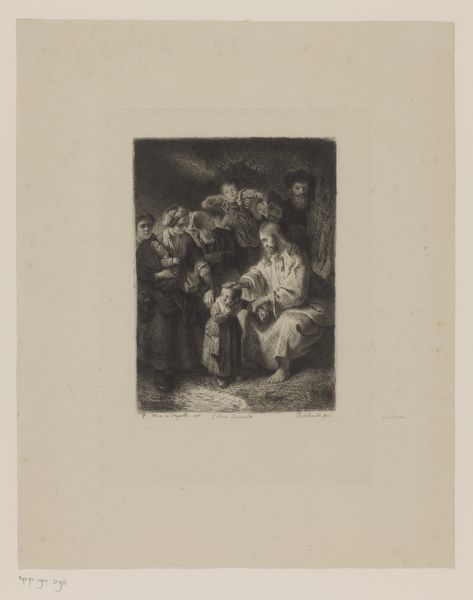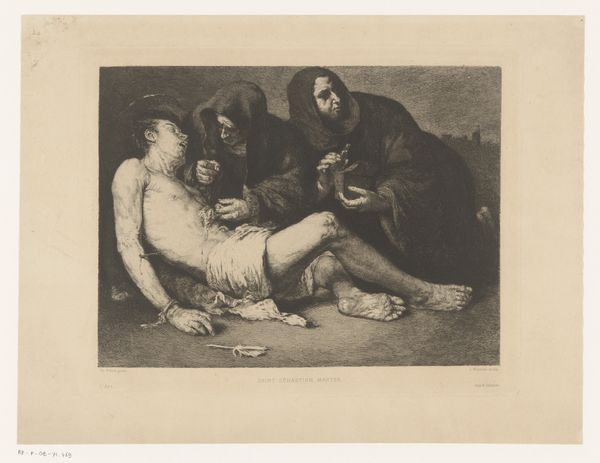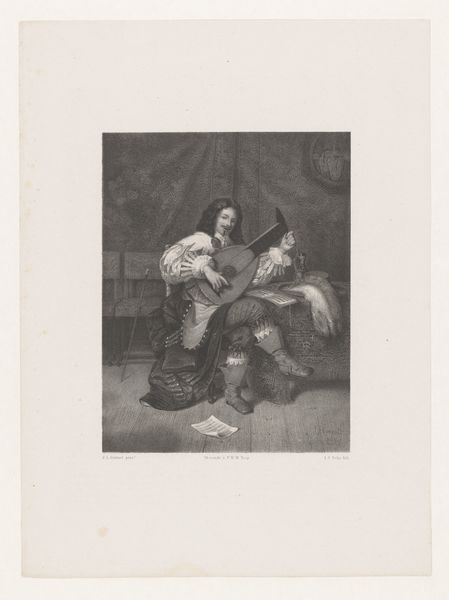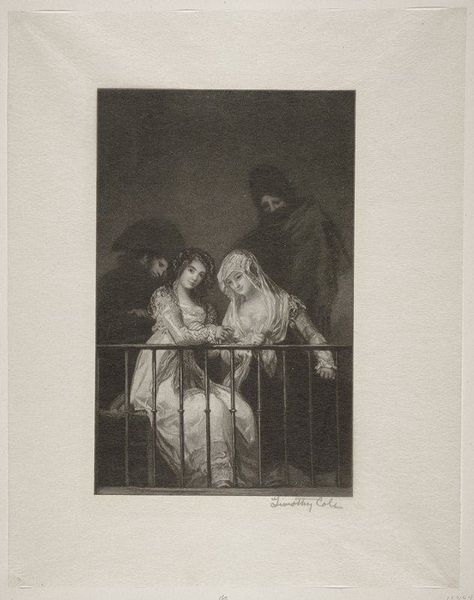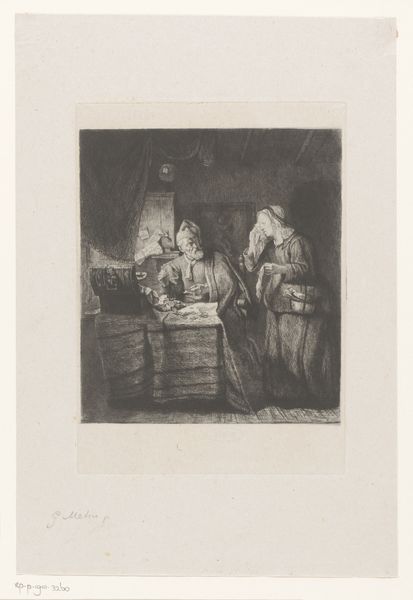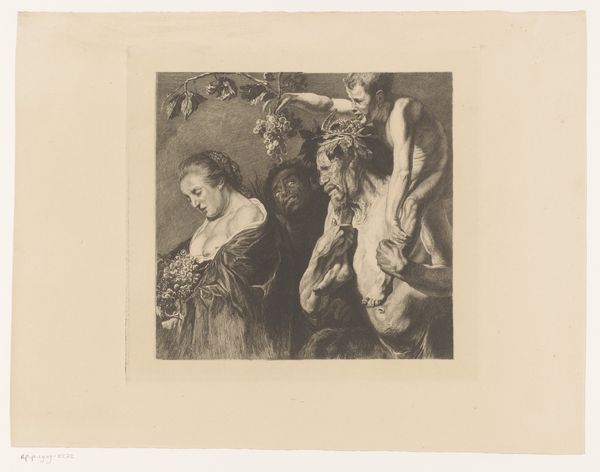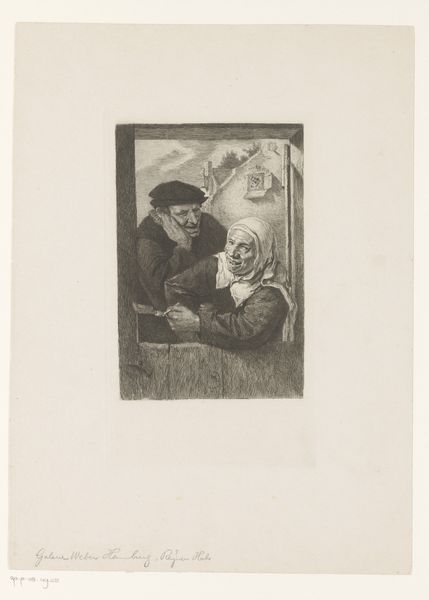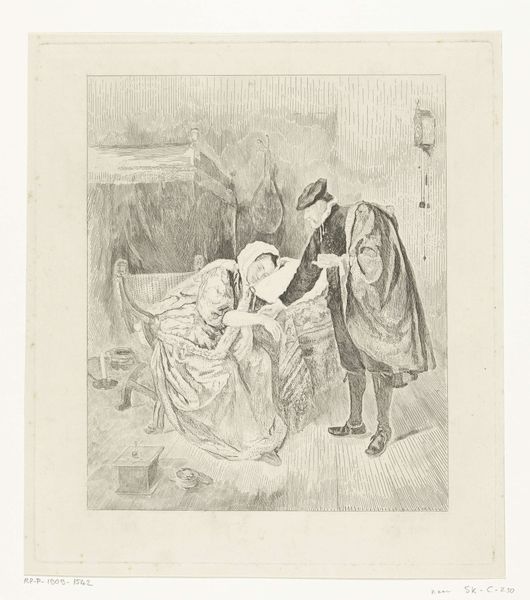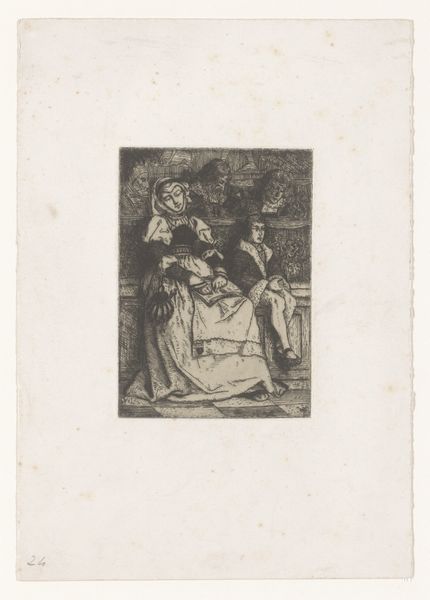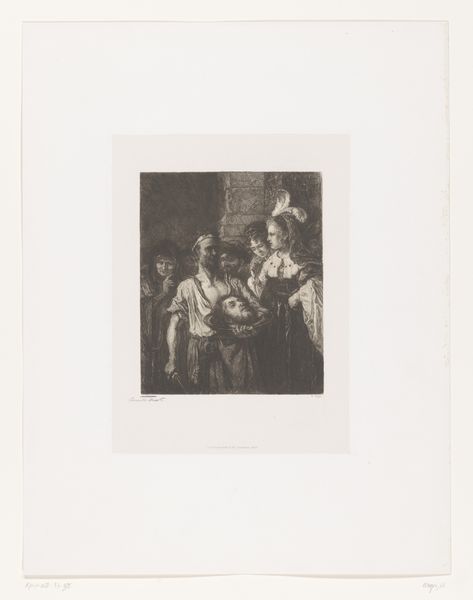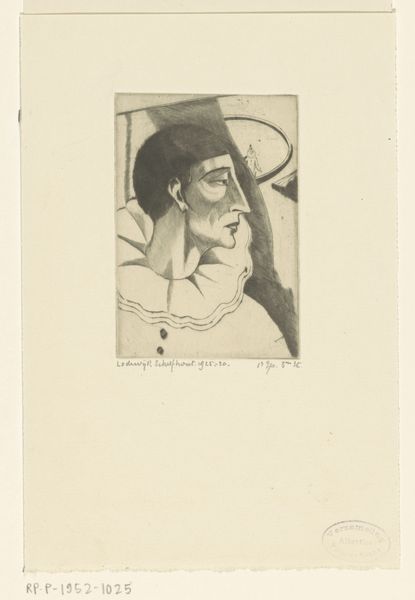
Dimensions: height 234 mm, width 170 mm
Copyright: Rijks Museum: Open Domain
Curator: This is a work titled "Twee vrouwen met daarachter twee mannen in de schaduw," created sometime between 1841 and 1910 by Léopold Flameng. The primary medium is etching. Editor: It's quite stark, isn’t it? Almost like a stage setting for something tragic. The darkness of the figures in the back contrasts dramatically with the women in front. There is a definite sense of mystery, possibly menace. Curator: That contrast is crucial. Flameng’s interest lay in highlighting social dynamics of the era. Consider the public roles women played in the period versus men; this division can easily be felt in the piece. The women are seemingly exposed, while the men recede. Editor: I agree. The positioning certainly hints at power dynamics, visible and invisible, especially in the implication that these women are on display. They're partially framed, held behind a fence, perhaps mirroring societal expectations. Their bodies and status, objects of observation, maybe even desire. Curator: And what do those observations and desires entail? Léopold Flameng produced art for a very specific cultural class and his goal was to provide windows into it. What do his renderings expose or attempt to normalize? Are they images about female spectacle for whom? Editor: It brings up the notion of the gaze. Who is allowed to look, who benefits, and what are the ramifications for the women being watched? Considering Flameng was producing for a particular social class, it makes you wonder how the men’s positions contribute to that feeling of unease. Do they possess that right? And with what consequence? Curator: Precisely. How might Flameng reflect the increasing pressure on women of the 19th century, their limited opportunities and constrained agency when it comes to making life choices? What did these figures witness as active observers, and are those spectators culpable, active decision-makers or simply going along to get along? Editor: Food for thought. It reveals the ways art can be this charged battleground for issues concerning gender, representation, power. What do you walk away with, contemplating a piece like this? Curator: I think about what kinds of stories Flameng could have been exploring through such subtle positioning, and ultimately what is left for the viewer to project. Editor: It certainly prompts introspection about these visual hierarchies that still impact society. I'll carry that sense of disquiet with me for some time.
Comments
No comments
Be the first to comment and join the conversation on the ultimate creative platform.
